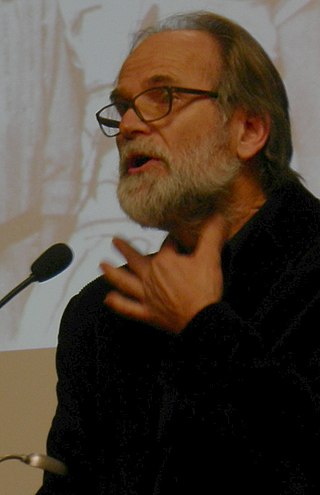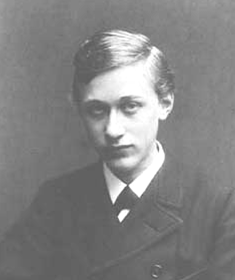Related Research Articles

Trimpin is a German born kinetic sculptor, sound artist, and musician currently living in Seattle and Tieton, Washington.

Carlos Mérida was a Guatemalan artist who was one of the first to fuse European modern painting to Latin American themes, especially those related to Guatemala and Mexico. He was part of the Mexican muralism movement in subject matter but less so in style, favoring a non-figurative and later geometric style rather than a figurative, narrative style. Mérida is best known for canvas and mural work, the latter including elements such as glass and ceramic mosaic on major constructions in the 1950s and 1960s. One of his major works 4000m2 on the Benito Juarez housing complex, was completely destroyed with the 1985 Mexico City earthquake, but a monument to it exists at another complex in the south of the city.

Pamela Z is an American composer, performer, and media artist best known for her solo works for voice with electronic processing. In performance, she combines various vocal sounds including operatic bel canto, experimental extended techniques and spoken word, with samples and sounds generated by manipulating found objects. Z's musical aesthetic is one of sonic accretion, and she typically processes her voice in real time through the software program Max on a MacBook Pro as a means of layering, looping, and altering her live vocal sound. Her performance work often includes video projections and special controllers with sensors that allow her to use physical gestures to manipulate the sound and projected media.
Richard Misrach is an American photographer. He has photographed the deserts of the American West, and pursued projects that document the changes in the natural environment that have been wrought by various man-made factors such as urban sprawl, tourism, industrialization, floods, fires, petrochemical manufacturing, and the testing of explosives and nuclear weapons by the military. Curator Anne Wilkes Tucker writes that Misrach's practice has been "driven [by] issues of aesthetics, politics, ecology, and sociology." In a 2011 interview, Misrach noted: "My career, in a way, has been about navigating these two extremes - the political and the aesthetic."
Raven Chacon is a Diné composer, musician and artist. Born in Fort Defiance, Arizona within the Navajo Nation, Chacon became the first Native American to win a Pulitzer Prize for Music, for his Voiceless Mass in 2022.
Manuel Rocha Iturbide is a Mexican composer and sound artist.

Sonya Noskowiak was a 20th-century German-American photographer and member of the San Francisco photography collective Group f/64 that included Ansel Adams and Edward Weston. She is considered an important figure in one of the great photographic movements of the twentieth century. Throughout her career, Noskowiak photographed landscapes, still lifes, and portraits. Her most well-known, though unacknowledged, portraits are of the author John Steinbeck. In 1936, Noskowiak was awarded a prize at the annual exhibition of the San Francisco Society of Women Artists. She was also represented in the San Francisco Museum of Art’s “Scenes from San Francisco” exhibit in 1939. Ten years before her death, Noskowiak's work was included in a WPA exhibition at the Oakland Museum in Oakland, California.

Maynard Dixon was an American artist. He was known for his paintings, and his body of work focused on the American West. Dixon is considered one of the finest artists having dedicated most of their art to the U.S. Southwestern cultures and landscapes at the end of the 19th-century and the first half of the 20th-century. He was often called "The Last Cowboy in San Francisco."
Jesús Reyes Ferreira, (1880-1977) born José de Jesús Benjamín Buenaventura de los Reyes y Ferreira and also known as Chucho Reyes, was a self-taught artist and antiques/art collector and vendor. Reyes Ferreira began painting on crêpe paper, a delicate material not meant to last, as a way of decorating paper meant to wrap sales from his antiques/art store. The decorated paper became popular enough to be sold on its own. Although he began this activity in Guadalajara, he did not produce the bulk of his work until after he moved to Mexico City when he was 58 years old. Here he continued collecting and selling objects such as colonial art and Mexican handcrafts and folk art, being one of the early exponents for the appreciation of these objects. He also spent several hours a day painting. His work was first exhibited in 1950 with his first individual exhibition in 1967 at the Palacio de Bellas Artes after a half century of painting. As a self-taught painter, his works are relatively simple and often are dismissed as folk painting but they were and his aesthetics were praised by famous artists and architects at the time.

Jazzamoart is a Mexican artist best known for his painting which is mostly connected to jazz music in some way. Born Francisco Javier Vázques Estupiñán in Irapuato, Guanajuato, his talent was recognized early and he took his professional name from his dual passions of jazz and art. He is best known as a painter with over 400 individual and collective exhibitions on several continents, but he has also done monumental sculpture, stage scenery and has collaborated with musicians. He lives in Mexico City.

Guillermo Ceniceros is a Mexican painter and muralist, best known for his mural work in Mexico City, as well as his figurative easel work. He began his mural painting career as an assistant to mural painters such as Federico Cantú, Luis Covarrubias and then David Alfaro Siqueiros who was a mentor and a key influence. Ceniceros is the most notable of Siqueiros' assistants. While he has experimented with abstract expression, his easel work mostly classifies as figurativism and is influenced by the geometrical construct of Mexican muralism. He has had over 300 individual and collective exhibitions in Mexico and the International stage. His work has been recognized by the Mexican Ministry of Culture and several of its institutions. He has painted over 20 large scale Mural Paintings with some of the most notable being the large scale work for the Legislative Palace of San Lazaro as well as his murals in the Metro Subway System. He is a member of the Salón de la Plástica Mexicana. In 1995, the State of Durango, Ceniceros' native state, opened to the public the Guillermo Ceniceros Art Museum within the oversight of the Ministry of Culture. Ceniceros has been reviewed by notable critics such as Berta Taracena, Raquel Tibol, Alaide Foppa, Graciela Kartofel, José Angel Leyva and Eduardo Blackaller among others. There are several publications about his work including a vast review of his art life endeavors developed by the Ministries of Culture of Durango and Nuevo León. He is married to the artist Esther González and lives in his studio house in the Colonia Roma of Mexico City.
Mario Orozco Rivera was a Mexican muralist and painter, a later proponent of Mexican muralism, and whose work was particularly influenced by David Alfaro Siqueiros. He created a number of murals, mostly in the state of Veracruz before becoming an assistant to Siqueiros, directing the Taller Siqueiros in Cuernavaca and working with the artists on projects such as the Polyforum Cultural Siqueiros. While preferring mural work, which he considered less commercial, Orozco Rivera also created oils and sculptures. Many of these works were exhibited in Mexico and abroad and can be found in many major collections. His work received recognition in various countries.

Oluf Hartmann was a Danish painter. Trained at the Royal Danish Academy of Fine Arts in Copenhagen, he showed his works at important exhibitions in the 1900s.
Diego Ramírez is a Mexican/Australian artist and writer working across different mediums. Born in Guadalajara, Mexico he relocated to Melbourne, Australia in 2008.
Michael Bruce Odland, known as Bruce Odland, is a composer, sound artist and sonic thinker. He is known for large-scale sound installations in public spaces, creating unique instruments that reveal music inherent in natural and urban environments, and for his pioneering work in theater, film and interactive multi-media. He lives and works in Westchester County, New York. Odland's musical sculptures and sound installations have been shown in major cities such as New York, Berlin, and Zurich; in art museums including the Denver Art Museum, the Field Museum and Mass MoCA; and at the international documenta14, Ars Electronica, Edinburgh International and Salzburg Festivals. Many of his installations are collaborations with Austrian sound artist Sam Auinger, with whom he formed an artistic partnership O+A in 1989. Together they have created more than 50 sound installations in Europe, North America and Asia.

Fraenkel Gallery is a contemporary art gallery in San Francisco founded by Jeffrey Fraenkel in 1979. Daphne Palmer is president of the gallery.

Xochipilli, subtitled "An Imagined Aztec Music", is a short composition for four wind instruments and six percussionists by the Mexican composer Carlos Chávez, written in 1940. Its original title was Xochipilli-Macuilxóchitl, which is the double name of an Aztec god in two of his aspects, meaning "Flower Prince" and "Five Flower".

Tarek Atoui is a Lebanese contemporary artist and composer.
Dewey Crumpler, is an American painter and educator. He taught at the San Francisco Art Institute (SFAI) for many years, where he held the title of associate professor.

Caleb Duarte Piñon (ka-leb) is an American multidisciplinary artist who works with construction type materials, site-specific community performance, painting, and social sculpture and social practices.
References
- ↑ "Recreating The U.S.–Mexico Border With "Border Cantos"". Texas Monthly. 9 December 2016.
- 1 2 3 "Crossing borders and disciplines is a sonic journey for composer Guillermo Galindo - The Salt Lake Tribune". archive.sltrib.com.
- ↑ "Guillermo Galindo // Bio - MAGAZZINO".
- 1 2 3 4 5 Droitcour, Brian (1 June 2018). "Guillermo Galindo".
- 1 2 3 4 5 "Lost and Found". frieze.com. 7 February 2017.
- 1 2 "Guillermo Galindo's Songs of the Border". 5 June 2019.
- ↑ Kosman, Joshua (22 November 2005). "Galindo's 'Trade Routes' score captures spirit of Oakland's own streets". SFGate.
- ↑ "Inspira Goded 'Blood Bolero'". www.reforma.com.
- ↑ "Kronos Festival is an eclectic treat - SFChronicle.com". www.sfchronicle.com. 29 April 2018.
- ↑ "Deep history of Nashville Public Square inspires sound artist".
- ↑ "Border Cantos: Richard Misrach | Guillermo Galindo".
- ↑ "Making Art from the Materials Left Behind at the US–Mexico Border". Hyperallergic. 21 July 2016.
- ↑ Weideman, Paul. "Long division: "Border Cantos"". Santa Fe New Mexican.
- ↑ Sheehan, Tanya (14 June 2018). Photography and Migration. Routledge. ISBN 9781351997904 – via Google Books.
- ↑ Lefrak, Mikaela; Heimann, Stephanie (23 June 2016). "Requiem for a Border Wall". The New Republic.
- ↑ Alexander Ortega (29 September 2016). "Songs of the Cross: Guillermo Galindo's Border-Healing Ritual". SLUG Magazine.
- ↑ Greene, Patrick. "Mexican artist Guillermo Galindo brings his 'Sonic Borders' project to Rollins". Orlando Weekly.
- ↑ "Report: documenta 14 in Kassel - Ocula". ocula.com. 24 May 2019.